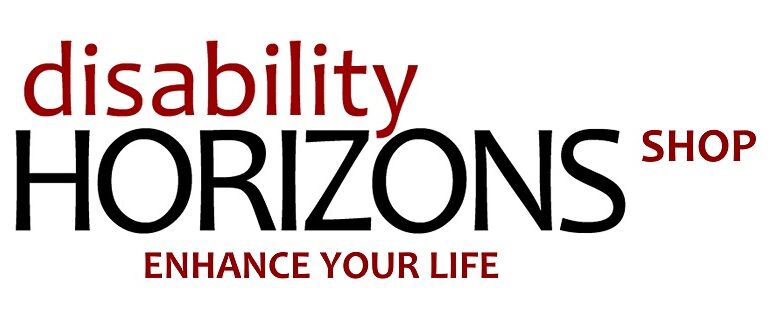Government Help for People with Disabilities
Government help is important for people with disabilities. It helps people live independently and get the care they need. This blog post compares how three countries help disabled: the United Kingdom, the United States, and Australia.
What We Will Look At
We will look at different programs in each country:
- United Kingdom: Personal Independence Payment (PIP)
- Australia: National Disability Insurance Scheme (NDIS)
- United States: Social Security Disability Insurance (SSDI)
Why This Matters
Understanding these programs helps us see the benefits and weakness of each system and a better understanding of the lives of disabled people in different countries.
Read on to find out how these countries provide money, healthcare, and independence to people with disabilities.
| Key Takeaways | Summary |
|---|---|
| Country Comparison | Overview of disability funding in the UK, USA, and Australia. |
| Types of Support | Personal Independence Payment, NHS Continuing Healthcare, Direct Payments (UK); National Disability Insurance Scheme (Australia); Social Security Disability Insurance, Medicaid (USA). |
| Eligibility Criteria | Different criteria for funding and support in each country. |
| Funding Challenges | Common challenges across all systems include aging populations and equitable access to services. |
Disability Support in the United Kingdom
Personal Independence Payment (PIP)
Personal Independence Payment (PIP) provides financial support to cover extra costs from having a long-term disability or ill-health. It is gradually replacing Disability Living Allowance (DLA) for people aged 16-64. In 2024, 2.6 million people are receiving PIP which has prompted the government to consult about changing the system
The amount received depends on how the condition affects the individual, not the condition itself. PIP is comprised of two components:
- Daily living part: For help with everyday tasks. The weekly rate is either £72.65 (standard) or £108.55 (enhanced).
- Mobility part: For help with getting around. The weekly rate is either £28.70 (standard) or £75.75 (enhanced).
Eligibility for PIP is determined through an assessment of the person’s ability to carry out key activities, scored on a points-based system.
NHS Continuing Healthcare (CHC) in the UK
NHS Continuing Healthcare (CHC) provides ongoing care for people with serious health needs. The NHS arranges and pays for this care, which can be given at home or in a care home. The care needs, not the diagnosis, decide if someone gets CHC. The money is paid to the individual as a budget or directly to the care provider, but it can only be used for care costs approved previously.
Who Can Get CHC
To get CHC, a person must have a primary health need. The assessment looks at:
- Complexity of needs
- Intensity of needs
- Unpredictability of needs
The process starts with a simple checklist. If needed, a full assessment follows. The integrated care board (ICB) pays for all approved health and social care costs.
Problems in the Assessment Process
Different Eligibility Rates:
- Eligibility rates vary by region.
- Example: In 2024, eligibility was 36.9 per 50,000 people in Cornwall, but 301.03 per 50,000 in Lincolnshire.
- This inconsistency raises fairness concerns.
More Fast-Track Assessments:
- Fast-track assessments have increased, while standard ones have decreased.
- Fast-track is for quickly worsening conditions, but delays can occur, causing late support.
Delays in Assessment:
- Many people face long waits for assessments.
- In March 2024, 1,730 referrals were delayed over 28 days.
- Delays are due to disputes, backlogs, and staff shortages, affecting timely care.
Impact on People and Families
- The CHC process can be stressful, especially during tough times.
- Families might face high care costs if found ineligible.
- Public awareness of CHC is low.
- Issues include:
- Little involvement of the person or family in assessments
- Inconsistent use of assessment tools
- Long delays between referral and decision
Understanding these challenges can help improve the CHC system for everyone. A full report of the current issues is here.
Direct Payments
Direct payments are monetary payments given to individuals by their local council to pay for their own care and support services. This gives the disabled person greater choice and control over their care. Direct payments can be used to hire care workers, purchase equipment, and pay for services that meet assessed needs.
In 2022-23, 142,000 adults in England received direct payments, totaling £2.0 billion. This represented 29.3% of adults receiving long-term community care
Other Programs
 Other available support includes:
Other available support includes:
- Disabled Facilities Grants of up to £30,000 for home modifications
- Motability Scheme for leasing accessible vehicles
- Disabled Students’ Allowance of up to £25,000/year for education costs
Australia
National Disability Insurance Scheme (NDIS)
The National Disability Insurance Scheme (NDIS) is a national program that funds costs associated with disability. It provides Australians under 65 with a permanent and significant disability with funding for supports and services.
Individuals receive an NDIS plan with a funding package to purchase necessary supports. Plans are developed through conversations between the participant and an NDIS representative, focusing on the person’s goals and support needs.
As in the UK, many more people have been taking up the benefits of this programme.
As of March 2023, there were 575,282 active participants in the NDIS. This represents a significant increase from the 432,649 participants in December 2020.
The average annualized committed supports (plan budget) per active participant was $80,400 as of March 2023. This is higher than the $71,200 average in December 2020.
The most common primary disabilities supported as of March 2023 were:
- Autism: 37%
- Intellectual Disability: 19%
- Psychosocial Disability: 10%
So autism and psychosocial disability have remained at similar proportions, while the share of participants with intellectual disability as their primary condition has decreased slightly since 2020.
In summary, the NDIS has continued to grow, with participant numbers increasing by 33% between December 2020 and March 2023. Average plan budgets have also risen by around 13% over that period. Autism remains the most common primary disability supported.
Other Programs
Other assistance includes:
- Mobility Allowance of $99.50 per fortnight for transport costs
- Essential Medical Equipment Payment of $160 per year for energy costs
- Employment Assistance Fund of up to $30,000 for work modifications
United States
Social Security Disability Insurance (SSDI)
Social Security Disability Insurance (SSDI) is a federal insurance program that provides benefits to disabled individuals who have worked and paid Social Security taxes. The amount received depends on the individual’s pre-disability earnings. There is a 5 month waiting period before benefits start.
According to the most recent data from the Social Security Administration, as of October 2023, 7.4 million disabled workers received SSDI benefits. The average monthly benefit for disabled workers was $1,483 as of October 2023.
To qualify for SSDI, individuals must still meet the same basic requirements:
- They must have worked long enough and recently enough under Social Security to be “insured”. Generally, this means having worked at least 5 of the last 10 years before becoming disabled.
- They must have a medical condition that meets Social Security’s strict definition of disability. The condition must be expected to last at least one year or result in death, and it must prevent the individual from engaging in “substantial gainful activity” (defined as earning more than $1,470 per month in 2023).
So in summary, while the number of SSDI beneficiaries has declined from 9.7 million in December 2020 to 7.4 million in October 2023, the average monthly benefit amount has increased from $1,277 to $1,483 over that period. The basic qualifications related to work history and disability status remain unchanged.
Supplemental Security Income (SSI)
Supplemental Security Income (SSI) is a federal income supplement program that provides cash to low-income aged, blind and disabled people. It is funded by general tax revenues, not Social Security taxes. Many states provide supplemental payments in addition to federal SSI benefits.
As of April 2024, 7.4 million individuals were receiving SSI, including approximately 994,000 disabled children. The average monthly federal SSI payment is $698.16, but this can vary with state supplementation
Medicaid
Medicaid is a state and federal program that provides health coverage for low-income people, including elderly and disabled individuals. It is the largest source of funding for medical and health-related services for people with low income in the US.
Eligibility and covered services for Medicaid vary by state. However, federal law requires states to cover certain “mandatory benefits” like inpatient hospital services, home health services, and nursing facility services.
As of 2024, over 77.9 million Americans are enrolled in Medicaid, including children, pregnant women, parents, seniors, and individuals with disabilities. This makes Medicaid the single largest source of health coverage in the United States.
Eligibility groups mandated by federal law include low-income families, qualified pregnant women and children, and individuals receiving Supplemental Security Income (SSI). States also have the option to cover additional groups such as individuals receiving home and community-based services and children in foster care.
In recent years, the number of people with disabilities covered by Medicaid has increased, with federal policies continuously evolving to ensure broad and equitable access to essential healthcare services.
Other Programs
Other supports include:
- Ticket to Work for free employment services
- Plan to Achieve Self-Support (PASS) for setting aside income to pursue work goals
- Independent Living Services for developing skills to live independently
Comparison of key disability support programs:
| Country | Program | Eligibility Criteria | Benefit Type |
|---|---|---|---|
| UK | Personal Independence Payment (PIP) | Impact of condition, not diagnosis | Cash payment |
| UK | NHS Continuing Healthcare | Nature and complexity of care needs | Care services |
| Australia | National Disability Insurance Scheme (NDIS) | Permanent and significant disability | Funding package for support |
| US | Social Security Disability Insurance (SSDI) | Work history and disability definition | Cash payment based on earnings |
| US | Supplemental Security Income (SSI) | Low income, age, blindness or disability | Cash supplement |
| US | Medicaid | Low income and disability/age | Health coverage |
Conclusion
The UK, Australia and US all provide important financial support and care services for people with disabilities. However, there are differences in eligibility criteria, flexibility and scope between the countries’ programs.
The UK’s PIP and Australia’s NDIS determine funding based on how a person’s condition affects them rather than the diagnosis itself. The US’s SSDI amount depends on pre-disability earnings.
Direct payments in the UK and NDIS plans in Australia aim to give disabled people more choice and control over their support. The US’s Medicaid program varies more by state.
While these programs provide vital assistance, continued advocacy is needed to ensure disabled individuals receive adequate support to live independent, fulfilling lives. Governments must keep working to improve access, choice and equity in disability services.
Some key challenges facing disability support systems include:
- Aging populations putting pressure on care and funding
- Ensuring equitable access to services across geographic areas
- Providing person-centered support tailored to individual needs
- Helping disabled people achieve employment and community participation
- Responding to increased mental health needs exacerbated by the COVID-19 pandemic
Disability advocates, policymakers, service providers and disabled people must collaborate to design and deliver high-quality, sustainable support that empowers individuals to thrive. With well-funded, innovative and responsive disability care, we can build more inclusive societies for all.
